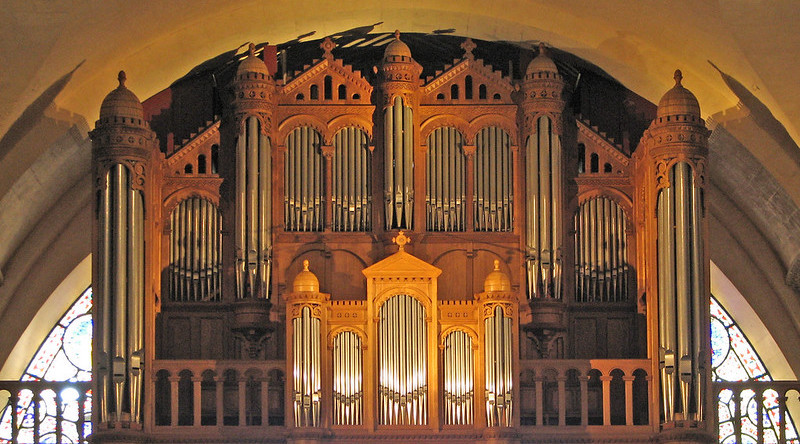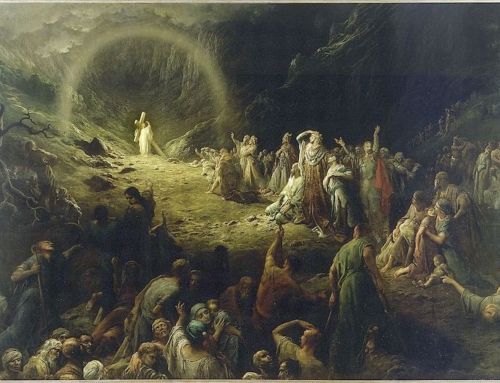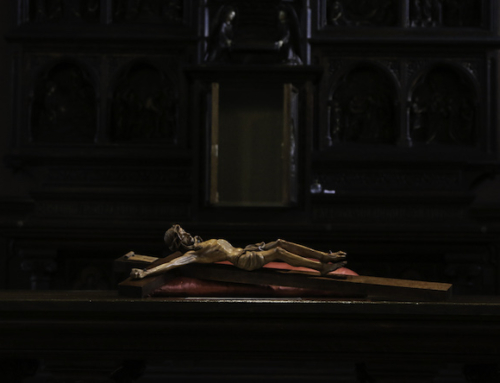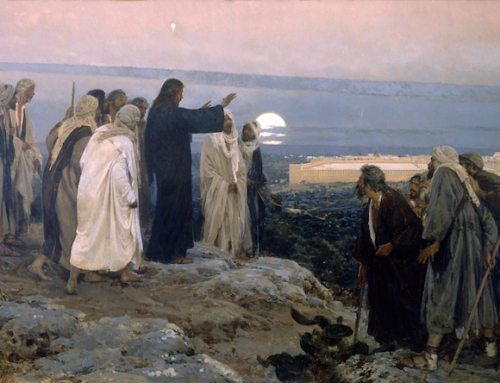It is evident that the human soul is moved in various ways according to various melodies of sound . . . Hence the use of music in the divine praises is a salutary institution, that the souls of the faint-hearted may be the more incited to devotion. (St. Thomas Aquinas ST IIa-IIae q. 91, a. 2)
Imagine your favorite movie without any music. Scenes normally inspiring, dreadful, or joyful would seem quite dull and boring. Music can bring about many different emotions in us. It can bring back memories: the first time you fell in love, the nerves before a big race, or a time of deep sorrow. The same can be said for many memorable moments in the mass in one’s life: a couple picking out music for their wedding day, music that reminds them of the sacramental union they are entering into; or a group of friars preparing for solemn vows, choosing the music to reflect how God’s grace brought them to this moment. The music in the liturgy has the power to move the passions tremendously.
These ways change throughout the liturgical year as the music changes. This is heard clearly in hymns that we sing in the different liturgical seasons. It would be odd to sing In the Bleak Midwinter in the middle of Lent, or Jesus Christ is Risen Today during the Christmas season. But it’s not only the hymns at Mass that can affect our passions. The Mass settings can bring about different emotions, too. Take two different settings of the Kyrie: one that was written for Sundays in Advent and Lent and one that is used for most feast days and solemnities. These two versions of the Kyrie change the mood of anyone listening. The former is more somber while the latter is more joyful. Even though the Mass is the same throughout the entire year, the Church, in her wisdom, offers us a rich tradition of sacred music. The Church offers this to assist us in our contemplation of the life of Christ so that we can conform ourselves more to him.
Now the Church also changes music in the liturgical year so that her members are brought closer into the mysteries of the liturgy, both bodily and spiritually. Saint Pius X writes, “[Sacred music’s] proper aim is to add greater efficacy to the text, in order that, through it, the faithful may be the more easily moved to devotion and better disposed for the reception of the fruits of grace belonging to the celebration of the most holy mysteries” (On Sacred Music). One example of being “more easily moved to devotion” is the embellishment of the Holy Name in music. When the name of Jesus appears in a musical text, it is usually held out longer than the other words surrounding it. Some may bow their heads during this part of the music in reverence to the name of Christ. This in turn fosters a deeper awareness of and love for the Holy Name.
Music not only can assist us in praying during the liturgy, but it also can help us to meditate on what God is trying to reveal. And I think that’s the aim of the music changing throughout the year. One example of this from my life was one year at the Easter Vigil. The beginning of the liturgy began in darkness and the tones of the music were solemn. The tempo grew. And kept growing. Which culminated with triumphal trumpets blaring over a beautiful prelude, leading at last into a moving rendition of Jesus Christ is Risen Today. This brought me to tears, feeling with great depth the joy of Our Lord’s Resurrection. It’s a memory that I treasure, and the music moved me to reflect on this through its beauty. I would not have this treasure of a memory if it had not been for the marvelous music. If we take a step back and allow sacred music to touch our hearts and minds, we find ourselves drawn closer to the divine.
✠
Photo by Fr. Lawrence Lew, O.P. (used with permission)







